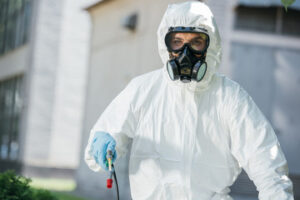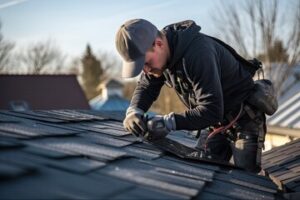Whether an upright or grand piano, these magnificent instruments are a joy to own and admire, but they are also difficult to transport. You’ve probably heard countless horror stories of friends or acquaintances trying to move their own pianos and usually with disastrous results.

Charleston Grand Piano Movers use specific equipment, such as dollies and straps. They often disassemble a grand piano to remove its legs and pedal lyre assembly.
When it comes to moving a piano, the right equipment is essential. Professional movers use proper padding and securing techniques, as well as specialty tools designed to handle the weight and size of these instruments. They also take the time to plan ahead and create a clear pathway for transporting the piano. This includes examining any obstacles such as doorways, hallways and staircases to ensure they can maneuver the piano around them without any problems.
Whether you’re moving a small upright or an old grand, securing loose parts is a top priority. This helps protect the piano during transport, ensuring it arrives in its new home with all its delicate parts intact. For example, securing pedals and music racks prevents them from getting damaged during the move. Likewise, wrapping the piano with blankets and securing them with tape adds an extra layer of protection to the instrument.
Another important piece of equipment used by piano movers is a ramp. This allows the movers to load the piano onto the truck more easily and reduces the risk of injuries during the process. The movers should also have several pairs of gloves, which help them keep a firm grip on the instrument and prevents damage to its surface. Finally, they should have a sturdy dolly that can be positioned underneath the piano to roll it to where it needs to go.
Local movers can handle moves within a tight deadline and offer competitive pricing. However, it’s important to balance price with quality of service. Choose a reputable company that offers transparent pricing and a comprehensive breakdown of all fees and charges to avoid any surprises. This will give you peace of mind knowing that your piano will be in good hands and arrive at its new home safely. You can also find out about the company’s reputation and experience by reading customer reviews. This will help you make the best decision for your unique situation. You should prioritize a company that has a strong track record of providing high-quality service. A good company will treat your piano as if it were their own and provide the care and attention it deserves.
Experienced Movers
When it comes to moving a piano, experience is crucial. You’ll want to ensure that the movers you choose have sufficient training and aptitude for this delicate job. A good way to find out is to ask them about their background and previous jobs. It’s also helpful to know whether they have extensive knowledge of different types and sizes of pianos. If they do, you can trust that they’ll know how to safely transport your instrument.
Additionally, you’ll want to ensure that the company has enough people on hand to handle the move efficiently. A large, full-service moving company can provide you with this assurance. They will have the right size truck and the necessary equipment to get the job done correctly. They will also clear the path when they are picking up the piano and delivering it to your new home, so that they can maneuver it through any tight spots without damaging the instrument.
Lastly, you should be sure to check whether the company provides a detailed quote before agreeing to any services. This will help you avoid hidden fees and ensure that you’re getting the best value for your money. The quote should outline all of the costs associated with the move, including labor, transportation and equipment usage.
Another thing to keep in mind when choosing a piano moving company is that it’s important to choose one with a proven track record. You can do this by checking customer reviews and testimonials on various online platforms, such as uShip. Look for companies with consistent positive feedback, as this is a sign of reliability and professionalism.
Finally, you should make sure that the movers you hire have specialized insurance that covers the cost of the piano in case of an accident during transport. Many reputable piano moving companies offer this option, and it’s an excellent way to rest assured that your instrument is in good hands.
Having an experienced, professional piano mover on your side can greatly reduce the stress and hassle of relocation. Regardless of the size or location of your home, a qualified piano mover can make the process easier by providing you with high-quality service and exceptional care.
Storage Options
Pianos can be quite expensive, and if not properly cared for, they can lose value or become damaged beyond repair. This is why it’s important to find the right location for storing your piano and to use professionals to move and store it. The wrong conditions can cause damage to the instrument, and even worse, if it’s a grand piano you may not be able to get it back in working condition.
The first thing that you need to do is make sure your piano is well protected while in storage. You should ensure that the piano is not dropped or dragged as this can lead to irreparable damage. The piano should also be secured to the truck using furniture blankets. It’s a good idea to have helper guides walk with the piano as it’s being moved to ensure that it doesn’t overbalance at either end of the journey.
It’s also worth bearing in mind that if you’re moving your piano long distance, it will be more expensive than a local move. This is because the longer distance requires more planning and resources, which will result in higher moving costs. If your piano needs to be transported up or down stairs, through a doorway, or over a balcony, then this will add to the cost too.
Professional piano movers can save you a lot of time and money by taking the stress out of moving your piano. They can prevent damage to the instrument, as well as property damage such as scratched walls, mangled pedals, and scuffed floors. In addition, they can avoid property damage to themselves by following safe practices and using the right equipment for the job. If you’re looking for professional and affordable piano movers in New York City, give us a call. We can provide a free quote and arrange the transport of your piano to its new home. Our staff is fully insured, which gives you peace of mind that your investment is in good hands. Our storage facilities are climate and humidity controlled so that your piano is protected while in storage.
Get a Free Quote
A piano is a massive instrument that requires specialized equipment and careful handling. Whether you’re moving an upright piano or a grand, it is important to hire a professional mover who understands the importance of protecting this delicate piece of furniture. By comparing quotes and researching companies, you can find a piano mover who offers quality service at a fair price.
A large upright piano can weigh as much as 1,200 pounds, so it’s not something that you should attempt to move on your own. In addition to their size, pianos have a lot of moving parts, making them difficult to maneuver and carry. A skilled piano mover will utilize proper lifting techniques to transport the instrument safely.
When choosing a piano mover, it is important to look for one who has experience in the field and has a good reputation. You can do this by asking about previous experiences or checking online reviews. It is also a good idea to ask for a free quote before hiring anyone. This will give you a better understanding of the costs involved with the move, so you can make an informed decision.
Upright pianos are smaller than grand pianos and can be difficult to maneuver through tight spaces. In order to protect your piano from damage, movers will wrap it in protective padding and use special equipment to transport the instrument. They will also secure the legs of the piano to prevent them from moving during transit.
Grand pianos are the largest type of piano and can weigh up to 1300 pounds. They are typically found in concert halls and studios, but they can occasionally be moved from home to home. This is a complex process that involves disassembling the piano before transporting it and then reassembling it at its new location.

